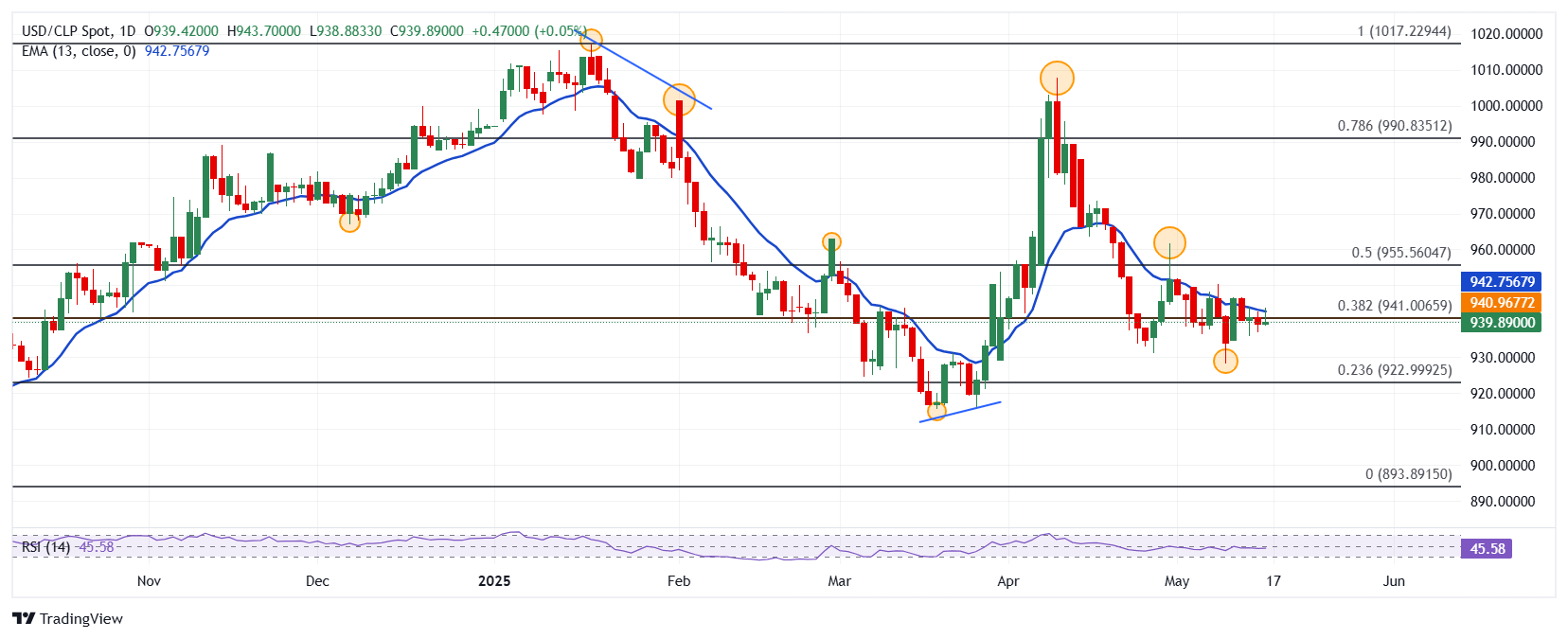- The US dollar advances to the Chilean peso, operating when writing about 940.17.
- The dollar index (DXY) falls 0.08% daily, visiting minimums of May 14 in 100.75.
- The price of copper fell 0.90% on Friday, reaching a minimum of the day at $ 4,5319 per pound.
- The feeling of consumer confidence at the University of Michigan stood at 50.8 points in May, below the market forecasts.
- Investors will be attentive to Chile’s gross domestic product to be published next Monday, May 19.
The USD/CLP marked a minimum of the day at 938.88, attracting buyers who brought parity to a maximum of two days in 943.70. Currently, the USD/CLP earns 0.08%, quoting at 940.17.
The Chilean weight remains stable after the consumer confidence index of the UOM
The index of feeling of consumer confidence of the University of Michigan, registered a decrease at 50.8 points from the 52.2 observed in the previous month. This figure disappoints the 53.4 points provided by the consensus.
After this news, the dollar index (DXY) loses 0.08% in the last day of the week, reaching a minimum of two days in 100.52, signing two consecutive sessions with losses.
Copper prices fall 0.90% today, oscillating within the operational range of the previous session at $ 4,5795 per pound.
Investors will be attentive to the publication of the Gross Domestic Product of Chile, which recorded an annualized growth of 4% in the previous quarter.
In this context, the Chilean weight falls to a minimum of May 14, while the USD/CLP earns 0.08% today, reaching maximum of two days in 943.70.
Technical levels in the USD/CLP
The USD/CLP formed a short -term resistance given by the maximum of April 30 in 961.65. The following important resistance is at 1,007.73, maximum of April 9. Down, the immediate support is at 928.21, minimum of May 9.
USD/CLP daily graphics

US dollar FAQS
The US dollar (USD) is the official currency of the United States of America, and the “de facto” currency of a significant number of other countries where it is in circulation along with local tickets. According to data from 2022, it is the most negotiated currency in the world, with more than 88% of all global currency change operations, which is equivalent to an average of 6.6 billion dollars in daily transactions. After World War II, the USD took over the pound sterling as a world reserve currency.
The most important individual factor that influences the value of the US dollar is monetary policy, which is determined by the Federal Reserve (FED). The Fed has two mandates: to achieve price stability (control inflation) and promote full employment. Its main tool to achieve these two objectives is to adjust interest rates. When prices rise too quickly and inflation exceeds the 2% objective set by the Fed, it rises the types, which favors the price of the dollar. When inflation falls below 2% or the unemployment rate is too high, the Fed can lower interest rates, which weighs on the dollar.
In extreme situations, the Federal Reserve can also print more dollars and promulgate quantitative flexibility (QE). The QE is the process by which the Fed substantially increases the flow of credit in a stuck financial system. It is an unconventional policy measure that is used when the credit has been exhausted because banks do not lend each other (for fear of the default of the counterparts). It is the last resort when it is unlikely that a simple decrease in interest rates will achieve the necessary result. It was the weapon chosen by the Fed to combat the contraction of the credit that occurred during the great financial crisis of 2008. It is that the Fed prints more dollars and uses them to buy bonds of the US government, mainly of financial institutions. Which usually leads to a weakening of the US dollar.
The quantitative hardening (QT) is the reverse process for which the Federal Reserve stops buying bonds from financial institutions and does not reinvote the capital of the wallet values that overcome in new purchases. It is usually positive for the US dollar.
Source: Fx Street
I am Joshua Winder, a senior-level journalist and editor at World Stock Market. I specialize in covering news related to the stock market and economic trends. With more than 8 years of experience in this field, I have become an expert in financial reporting.







